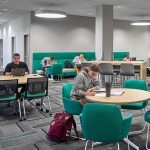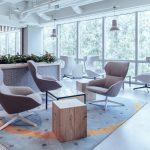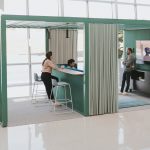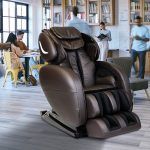Author Archives: vlm
Design Trends in Higher Education Facilities
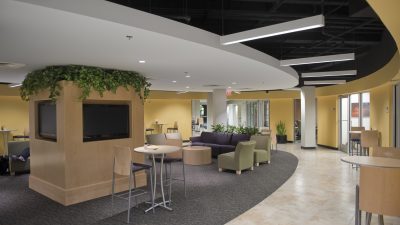
The competition among universities to attract top students is tremendous, and institutions of higher learning are continually seeking all sorts of ways to make their schools more attractive. According to this article from the Haworth blog, design trends in higher education facilities are creating whole new spaces and upgrading their existing ones, and adding a whole new dimension and incentive for attracting the best young minds.
The article notes seven design elements that students find appealing: the first impression; allowing for collaboration; mobile technology for remote work; flexible classrooms; space to allow focus; bright and comfortable spaces; and space to stretch out and relax. In each of these areas, schools have found ways to improve their furniture arrangements and make the most of their spaces.
The advancement of technology has created a wealth of opportunities, and working and collaborating remotely is among the foremost of those. The article cites an excellent example from the Donald W. Maine College of Business at Davenport University, where a hub is set up with ideal social space design. The space includes a coffee bar, tall tables with power and connectivity, three floors of enclaves, and a cloud-based platform for collaboration.
Another example is the Watt Family Collaboration Center at Clemson University, which made imaginative use of corridors to allow students to use the connectivity outlets and their laptops to work together in a lounge-type spot. The area is Wi-Fi accessible and creates an easily accessed space for gathering.
Take Advantage of Education Facilities Design Trends!
Does your school have a space you aren’t using to maximum effectiveness? Are you looking to improve a lobby, lounge, or study space to attract students? The professionals at Bellia Office Design are experts in design trends in higher education facilities. Reach out to us today to get started…we can help turn your space into something your students and faculty will love!
How to Support A Work From Home Model
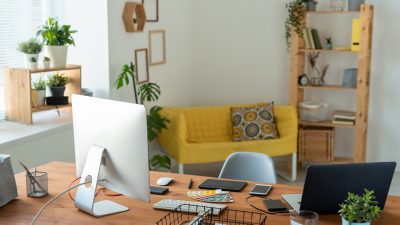
As we all know by now, recent world events have caused a great increase in employees working remotely, often on a full-time basis. The situation has reached a point where the ability to work from home is a key component of a job offer. With the office situation everywhere changing so rapidly, employers have had to adjust their offices and have had to learn how to support a work from home model.
This article from Haworth® gives a few examples of how several law offices have changed their office layouts to adjust to these needs, using Haworth’s help. While it is by no means unique to law firms, attorneys are one example of a profession where working from home can be highly conducive to better productivity…more comfort, fewer distractions, and more flexibility for employees who no longer have to commute.
As the article notes, companies with office space geared to a previous situation can now see this new reality as an opportunity, rather than an unnecessary overhead. In addition to seeking office design companies that can outfit homes with ergonomic desks and chairs as an incentive to attract employees, they can now redesign their office spaces to expand their capabilities.
One example is Warner Norcross + Judd, a law firm that actually reduced the size of their private office space to expand outdoor spaces, and created temporary work zones for people in partially remote positions. The ideas made for more attractive collaboration spaces, and an improved ability for employees to gather, socialize and accomplish more as a team.
Another option now available to business owners is the opportunity to convert unused office space into event space…where the company can not only hold its own promotional events, but also to host events for other companies’ and non-profits’ events.
The new challenge of how to support a work from home model offers a great opportunity to businesses who have found themselves with less used office space. More attractive collaboration, promotion, and employee incentive possibilities are available to companies that can make the most of their office space.
Call on Bellia To Support Your Work From Home Initiative!
If you’d like to find some ideas about how you can support a work from home model for your employees, reach out to Bellia Office Design today. We’ve remade offices, lounges, event spaces and more to maximize office space and productivity, and we can do the same for your business!
Designing Spaces for Higher Education
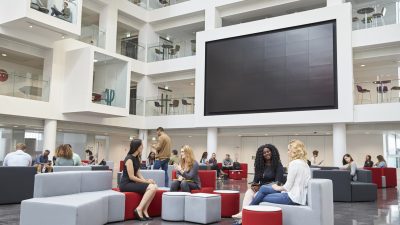
Designing spaces for higher education in 2021 is a very different animal than it was not very long ago. The competition for top academic talent in universities is much greater, and students are going to be looking for a variety of advantages and comforts involved in attending an institution. As a result, colleges are making adjustments and attending to a new list of student needs.
This article from the Haworth blog details seven design elements that are directed at attracting higher education students. They include a warm and welcoming atmosphere; ease of collaboration; flexibility to work anywhere; easily adjustable classrooms; and a focus on spaces that are ideal for comfort, relaxation and focus.
The piece goes into detail about the arrangement of university lobbies and socializing areas geared toward the type of student they hope to attract. As one example, it cites the College of Aviation at Western Michigan University – prospective students are greeted by aviation student ambassadors, and the rooms feature expansive windows and aviation graphics.
The piece also discusses an idea that at first glance seems paradoxical – the importance of enabling work from anywhere technology, while at the same time encouraging collaboration. The piece mentions the Watt Family Innovation Center at Clemson University and their innovative use of space in corridors, and the arrangement of the social space in “The Hub” at the Donald W. Maine College of Business at Davenport University.
In describing each design element, the focus remains on what a university can do to make life better for the student, and enable that student to meet the demands of higher education. This includes lobby, cafeteria, lounge, and classroom design that is geared to maximum comfort and focus. The result is an improved experience for both students and faculty.
Ask About Higher Education Spaces Design
If you’re interested in finding out more about how Bellia works with educational facilities, and how we create more functional and workable space designs, reach out to us today and tell us about your own needs. We’re happy to offer you our ideas for designing spaces for higher education!
Multi-Purpose Rooms Are Coming Back
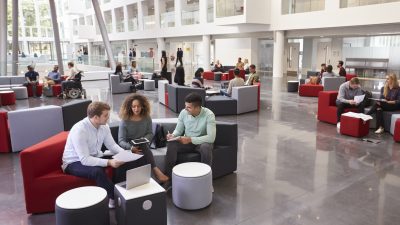
With many workplaces offering remote and work from home environments, there is still often a need for additional space for collaboration, meeting and gathering. While employees are still working remotely and not physically attending meetings as much as in the past, multi-purpose rooms are coming back in the form of what is called “Third Places”. A Third Place offers an ergonomically friendly and pleasant alternative to both the home and the workplace for employees to collaborate.
The “Third Place” – Why Multi-Purpose Rooms Are Coming Back
This fascinating article from the Haworth® website describes the purpose of the Third Place and how several of them across the globe are designed. Outside entities have taken the time to survey employees, adopt feng shui methods of color and style of room arrangement, and offering a hospitality level that inspires employees to escape the cabin fever of their home.
In Haworth’s own example of a Third Place in an office building in Cambodia (called “The Atom”), they assembled an “Ideation” team to discover how best to support differing work styles and collaboration needs within the Third Place. Three rooms were designed to maximize the use of space, color and hospitality offerings. The furniture in all three rooms of The Atom are specially designed to allow for flexibility to support both work meetings and events.
As the world changes rapidly, so does the location of where we work. Multi-purpose rooms are coming back in a whole new way…a separate gathering Third Place that is designed to be inviting and enable workers to leave their home and enjoy a change from their usual environment.
If you’d like to know more about the design of Third Place and how to create your own flexible and inviting meeting space, reach out to Bellia Office Design today. We are a licensed Haworth® furniture dealer, and we can create beautiful, stylish, and effective office designs that provide a true return on your investment!
Creating A Workspace That Encourages Employees to Return
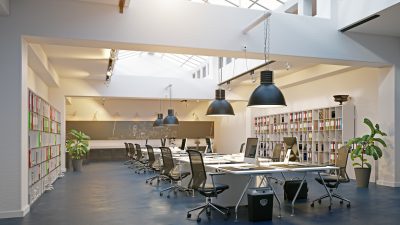
After a long period of so many employees working remotely, there is currently a move to return to the workplace. Employees are finding that they’ve missed the social interaction, the camaraderie with co-workers, and the convenience of face to face interaction. Now is a great time for an office redesign, and a renewed focus on creating a workspace that encourages employees to return.
Before you have a fully occupied office again, why not let your employees know you appreciate their presence with new furniture, a better ergonomic design, and improved collaboration areas? As this article from our friends at Haworth® points out, it’s an ideal time to replace older furniture and remake your office into a more inviting space.
But as the piece also makes note, it’s highly important to not only fully plan your new office design, it’s a good idea to take advantage of the change period…take the time to visualize the new office design and the new furniture layout, properly organize everything in your office before the move, thoroughly clean the newly vacated carpets, move out and shred contents that have been taking up space, and ensure that power supplies and other necessary equipment will be placed properly.
With employees suffering from cabin fever eager to return to the office and interact with their co-workers again, nothing will welcome them like a brand new office design, new and comfortable furniture, and other office elements creating a workspace that encourages employees to return.
Not sure where to start with your new office design? Reach out to the pros at Bellia Office Design today, and let us help you with top quality furniture and a new office layout that maximizes your space and efficiency! Reach out to us today and request your free workspace evaluation…we’re looking forward to helping you update your office for your employees’ return!
Creating A Work From Anywhere Environment

As the COVID-19 pandemic appears to finally be subsiding, the remote working environment has remained ongoing for many companies and people. Creating a work from anywhere environment, however, isn’t just as simple as providing remote connections and cloud services to employees. The best performers on your team need to be able to effectively collaborate and share ideas, and be able to resolve conflict in an environment where they aren’t face to face with customers or each other.
The Key To The “Work From Anywhere” Environment
This recent article on the Haworth website discusses this need, and reviews what is important regarding collaboration in a work from anywhere environment. Specifically, the article touches on “High Performing Teams” (abbreviated to HPTs)…individuals with specialized skills that have goals of superior results throughout the organization.
The need to furnish HPTs with high impact technology and tools for problem solving is particularly important. A company’s HPTs have a wide range of backgrounds and skill sets, and they may be partially or completely divided from each other by their physical location. Haworth offers a technology platform called Bluescape to assist employees in their collaboration, be it through setting up activities, assigning responsibilities, and following timelines.
Bluescape and other collaborative technology tools help to improve productivity and enable HPTs to work more efficiently, especially as the remote collaboration environment movement continues to grow. With the right tools in place, teams can better align their goals, and reduce the tension of problem solving.
The article also points out that companies wishing to implement collaborative technology should ensure that new technology offers sufficient advantages, encourage their leaders to advocate for the adoption of new tools, and allocate the needed resources to support the new technology.
Creating a work from anywhere environment, while obviously not an ideal or feasible goal for every company, is becoming a much more necessary part of doing business for companies hoping to attract top talent and present the best possible employee package. The key is ensuring that your top performers have all of the collaborative tools they need.
Do you need to reshape your office design for the future? Let the professionals at Bellia Office Design make it happen for you. Reach out to us today to tell us about your office design needs, and let us start you off with a free workspace evaluation!
Investing in Natural Spaces for Your Employees
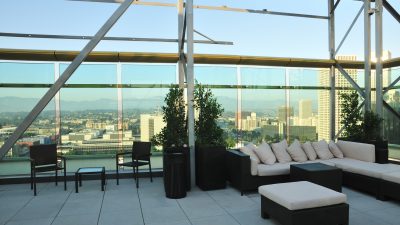
With so many employers looking to attract top talent today, especially eager young millennials, investing in natural spaces for your employees is one of many ways to promote an attractive and positive working environment. And in addition to being a selling point for working at your company, natural spaces offer great potential for return on your investment.
This recent article from Haworth® discusses the value of building parks and functional natural outdoor spaces for employees. It gives a mention of Apple Park in Cupertino, an intricate design that offers 176 acres of landscape where there was once asphalt, with the parking garage dug out underneath. The article also discusses Facebook’s building of a nine acre park around their facility, as well as a landscaped rooftop at their headquarters.
These beautiful scenes of greenery and landscape aren’t just a new and greatly improved space for employees to work outdoors, or to take a simple break and return to the office in a better frame of mind. Those things are important, to be certain, and are proven to make a difference in employee productivity.
But Haworth® also mentions its own efforts in creating a walkable green roof at its own headquarters, and the impact it has had…not just on general employee wellness but on their reduced costs of upkeep and general maintenance of the rooftop. The new green rooftop also helps to protect the building itself from the elements, and contributes to LEED credits for the company.
The benefits of investing in natural spaces for your employees go beyond attracting and keeping top young talent. Green spaces around and even in your building also contribute to a cleaner future, reduced carbon footprint, and even possibly reduced costs of common maintenance functions. As both larger and smaller corporations are proving, when done right, natural spaces can be well worth the investment.
Making Your Corporate Headquarters Attractive to Employees
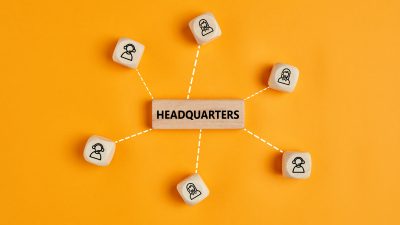
As the COVID-19 pandemic has likely outlasted the time period of what most of us expected, corporate employees continue to work remotely whenever possible. As this article from Haworth discusses, making your corporate headquarters attractive to employees is going to require a different approach…one that focuses on the activities that will be performed in corporate offices in the future.
The article, written by Foster & Partners architect Maria Paez Gonzalez, points out that Facebook learned early on in the pandemic that employees rather liked working from home…a survey they conducted indicated that half of them did not want to return to the office. As its forward thinking CEO, Mark Zuckerberg indicated he was planning for half of Facebook’s staff working remotely by 2030.
Similarly, other corporations, such as Amazon, Microsoft, and Zillow, stated that they were restructuring their policies to enable more remote work from their employees.
While this doesn’t exactly foreshadow the disappearance of the corporate headquarters, it does mean companies will be restructuring to accommodate the wishes of employees to travel to work less. One solution is satellite office hubs…offices in remote locations from corporate headquarters…which allow for more collaboration and coworking space than traditional offices.
For the most part, the focus of corporate headquarters and their satellite offices in the future is a movement away from traditional cubicles or open-plan offices. Rather, the office will be a combination of the virtual and physical workplace, enabling what can’t be done at home: employee onboarding, meeting with clients, and social gatherings.
Making your corporate headquarters attractive to employees in the future will involve focusing on the office as a space where employees can collaborate and share ideas comfortably, both with clients and each other. It will likely involve reconfiguration of desks, conference rooms, and office technology.
If you find yourself in need of an office reconfiguring in a working from home world, reach out to Bellia Office Design today. We can help you with an office design that encourages productivity and works for your company’s future.
Source: “The Rebirth of the Headquarters” by Maria Paez Gonzalez.
Using Design to Enhance Employee Resilience

Haworth continues to offer advice on using design to enhance employee resilience. The pandemic has shifted the expectation and ability of employers and employees alike. With so many office workers taking advantage of the perks that come with working from an off-site location, it’s easy to see that working from anywhere is becoming more and more acceptable.
However, burnout and stress are factors that can never be underestimated. Haworth has once again done the research needed to help business adjust to the ever-changing landscape.
Using Design to Enhance Employee Resilience Tips
Ambient qualities (air quality, noise, daylight, biophilia, and temperature) are important in buffering stress for both on-site and remote workers. However, findings show that additional factors influence the performance of each group.
On-Site Workers
Legibility and culture of the workspace is what on-site workers depend on. Things like Landmarks, visual access, architectural differentiation, and signage that enhance legibility allow for easier navigation throughout the workday. The companies culture is best experienced on-site. Finding support, alignment to the culture and trust within it are also vital to the success of on-site workers.
Remote Workers
User control and accessibility to coworkers are important to remote workers. The ease and duration of access to coworkers, along with the tools they need to engage with team members significantly improves their performance.
How to Buffer Stress and Prevent Burnout
Work stress can contribute to burnout and vice versa—creating a vicious cycle that amplifies both. By putting certain elements in place in your organization, you can help prevent workplace stressors and in turn foster stress recovery for building employee resilience.
On-Site Workers
Resources that help avoid burnout include:
- Creating and maintaining a constructive organizational culture
- Providing supportive qualities in the physical environment
- Challenging and constructive job demands.
Remote Workers
Resources that help remote workers avoid burnout include comfortable ambient qualities, user control of adjusting table height and chair adjustment, and lighting.
Support Overall Resilience
It’s clear that addressing the needs for individual performance and for those at risk for burnout is vital for individual health and performance. We’ve found that organizations that put measures in place to buffer workplace stressors can help prevent burnout. Organizations that do monitor and adjust to these variables get the added benefit of supporting resilience for the whole workforce.
If you’d like a new office design or find out more about how to improve your existing one, reach out to Bellia today and request your free workspace evaluation. We can help you and your employees love the space you’re in!
Are Social Spaces Still Important Post COVID?
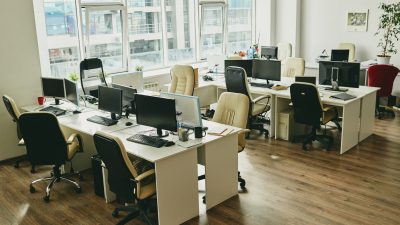
You may have asked yourself-are social spaces still important post COVID? It’s a fascinating question that the past 12 months have fostered, and Bellia has the answers. Some call it cautious, and some call it paranoia- either way, the awareness of the pandemic along with its effects on how we interact has shifted our communities to unprecedented forms of connecting. From live chat meetings to constant emails, many businesses are seeing themselves create a new way for their employees and customers to converse- but does that mean it’s the only way?
Why Social Spaces Still Important Post COVID
Lauren Rottet is an internationally celebrated architect/designer, who believes despite the changes, we need to remain socially connected. She spoke with Haworth’s Global Brand Director Kurt Vander Schuur and shared her thoughts on hospitality and social spaces. In fact, she feels social spaces are more important than ever as we return to the workplace. These spaces will have different looks and promote a new vibe, but the purpose will remain the same: supporting people in focus and collaborative work, as well as restorative activities.
“Work is coming to the hotels, and hospitality is coming to the office.”-that’s the opening sentiment she had to offer in her talk with Schuur, highlighting how the workspace has become contingent on locations available and if the location available is a set facility, these places must have a sense of geniality.
She also believes that it’s not so much we change the way we live, but we change the way we work entirely. Whether we think of it or not, a lot of our lives are based around our jobs, and sometimes our work comes home with us. This makes having a smaller workspace in your home and one at your office ineffective since you could simply work at home. Instead, she feels the office has become more than a place to do your part- it’s about communicating with others in a tactile, visceral way: to be social. People want to feel good about coming to the office since they do not have to. So why do they? They come because it’s a better environment.
With Bellia, businesses can help promote a better environment through design, furniture, and dressings to make the workplace more appealing. Please contact us here to learn how to bring your workplace a place you want to go.

